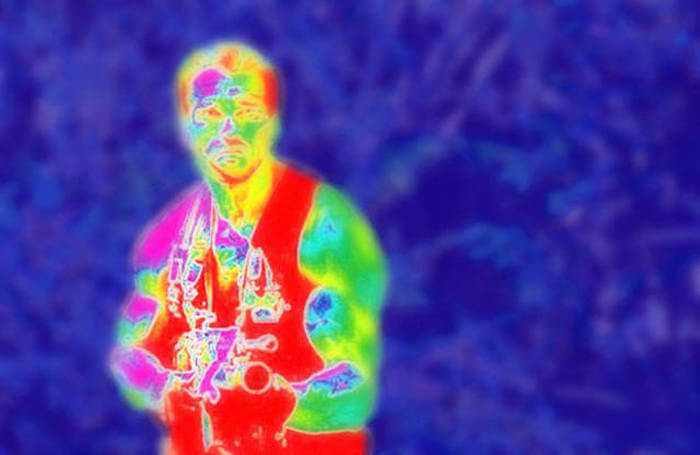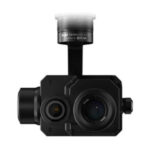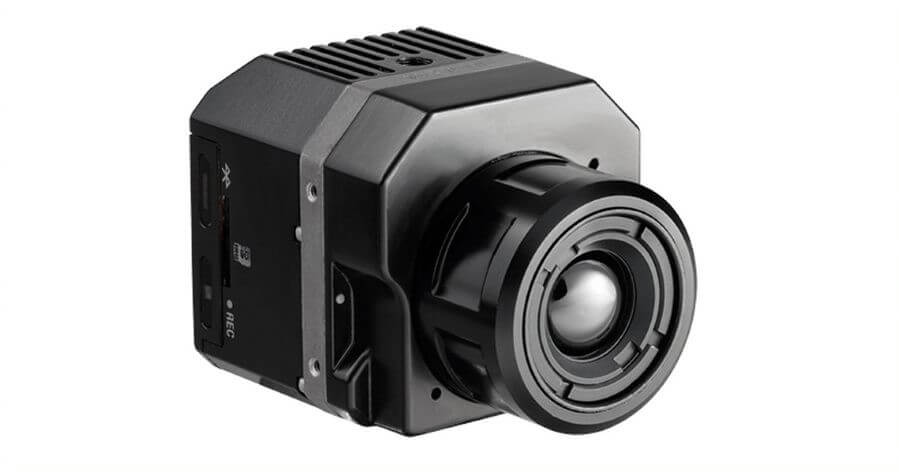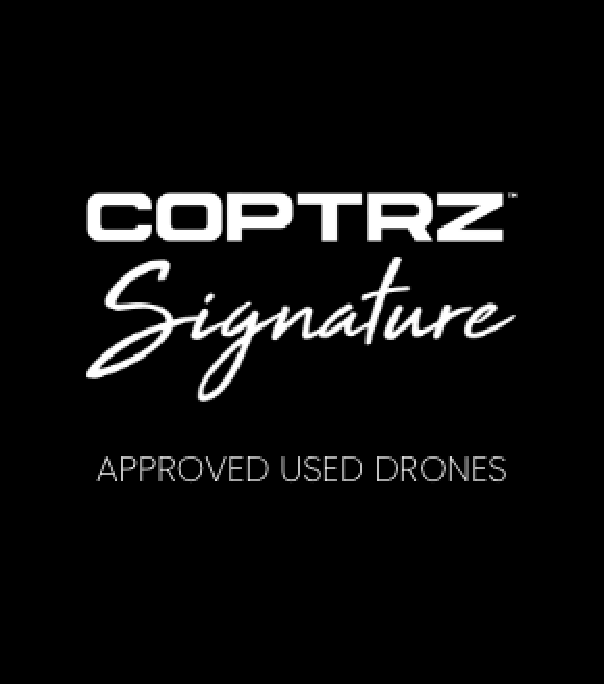Seeing the unseen through Thermal Camera’s can transform your aerial inspections
If you’re like us, your first taste of thermal cameras would’ve come from the film Predator. Back then, the tech was mind blowing, and it added an extra dimension to being hunted by an Extra Terrestrial being from another planet.
Hell, it nearly took out Arnie. No mean feat back in those days.

Fast forward to today, and thermal cameras used for public safety and inspections is nothing new. In fact, they’ve been a key aspect of aerial inspection work for decades. But, the emergence of drone technology has dramatically altered the landscape for organisations and operators. And, camera manufacturers have responded to this new technology.
What previously might have been something the size of a film camera suspended beneath a helicopter can now be carried in your pocket, hooked up to a drone and be in the air capturing images in the matter of minutes.
I know. That all sounds great, but how can we help you unlock this amazing technology?
Don’t worry. We’ve got you covered with drones, cameras, software, training and all-year round support.
Now we’ve got that out the way, let’s get on with this article starting with the most common question we get asked at Coptrz:
Who develops the best in thermal imaging cameras for drones?
While DJI might be the major player in the general drone market, when it comes to the forefront of thermal imaging, FLIR is first name that most professional operators will turn to. And, in most cases they’d be right to do so. But DJI changed the game this year when they released their latest Enterprise Drone the M300 along with brand new payloads. More specifically, the Zenmuse H20T.
The reason why Flir are still top of the league in our eyes is that the H20T can only be used on the M300 drone. Which rules it out for a lot of organisations, but, that doesn’t mean it’s not an amazing camera. And, when the name of the payload reads like “HOT”, like “HOT, HOT, HEAT” then you know it has to be something special and worthy of consideration in any list.
But, let’s talk about Flir for a minute.
Flir have been around since 1978 and has always had the intention to “pioneer the development of high-performance, low-cost infrared imaging systems for airborne applications”.
This company’s whole reason for being is thermal imaging systems, though we doubt that they’ll have envisaged where things would be now when they started out some 40 years ago. In partnership with Coptrz, the UK’s leading Commercial Drone Experts.
Today, we’re the only official UK partner for Flir UAS.
Are you interested in how drones can aid your organisation? Why not download our FREE guide on adopting drone technology in the Public Safety sector
Want to get your hands on some world class thermal cameras for your drone?
Now is the perfect time! Here at COPTRZ we are running some promotional offers from Monday 23rd November until Monday 7th December. So if you’ve been pondering incorporating thermal cameras into your operations, these offers are for you!
FLIR VUE TZ20
Just launched this year, this new payload has just taken your situational awareness to the next level.
This system provides a wide 95-degree field of view for maximum situational awareness, and a narrow 18-degree field of view to put more pixels on target when needed.
Add in 20x zoom capabilities, then the Flir Vue TZ20 allows drone pilots from the public safety and inspection sectors to gain field of view flexibility for improved image detail and magnification.
The dual-boson FLIR Vue TZ20 plug-and-play payload fully integrates with the DJI V2 M200-series and M300 airframes.
There’s a lot to like about this camera, especially the thermal imaging clarity that can be achieved from distance.
We have this camera on offer at the minute, with savings of up to £850! If you want to find out more information, click here.

DJI ZENMUSE XT2
With the same Tau 2 sensor as the Flir Duo Pro, the XT2, though a larger model, is essentially the same in terms of its thermal capacity – although being a DJI model it perhaps unsurprisingly comes with a few extra bells and whistles thrown into the software. These include a HeatTrack function which acts like a ‘follow me’ mode for a targeted object or hotspot, and a TempAlarm which enables you to set the sensor to look for anything with a certain temperature range.
There are added photography features, such as a burst shot option which can capture 3 or 5 pictures in a quick sequence, and an interval feature that lets you set the camera to take repeated shots from between every 2 to 30 seconds – which can be great for general survey or inspection work where you just want to set the drone off on a few straight lines to cover a whole field or swoop around a building.
Watch this short video from Randall Warnas on the Zenmuse XT2 for a deeper dive into the camera. And you know, there’s a reason why DJI collaborate with Flir for their thermal imaging cameras.
We currently have the XT2 on offer at the minute, with savings of up to £1300 to be had! You can purchase by clicking here.

How do Thermal Cameras work?
In a nutshell, they allow us to see what the human eye alone can’t.
What humans can see is based on light reflecting from a surface (something which is enhanced and optimised for ‘night vision’ cameras), but thermal imagery works on a much longer wavelength that goes beyond our own limitations – and that blind spot can be host to some crucial information which can have a dramatic effect on the safety or efficiency of what’s in the frame.
To keep the science bit brief, everything above absolute zero – which is commonly accepted as the coldest temperature you can get (that’s -273.15° Celsius or -459.67° Fahrenheit) – gives off thermal energy. So while thermal cameras are generally thought of as being a tool to monitor heat, they can equally be used to see variations in colder climates, such as glaciers or frozen tundra.
The higher the temperature, the more infrared radiation is emitted, and it is this variation that the camera converts into an electronic signal, and subsequently, an image that the human eye can see.

Thermal Cameras for Inspection
What those images represent can cover a wealth of areas applied across all aspects of inspection, surveying and more. It could be heat leaking from a roof that could highlight poor insulation or stress damage to a building.
Oil and gas companies might use thermal imaging to detect unwanted air or gas emissions that could prove both dangerous and costly, whether it’s on-site or across a network of pipelines. Similarly, it’s becoming increasingly common in utilities and energy, with the capacity to monitor water damage and drainage or the efficiency of solar panels is potentially saving millions of pounds – and the list goes on.
Not only could a thermal drone camera for inspection work give you more data to work with – and more data gives you more ways to increase efficiency, reduce costs and increase profits – it can also help you detect and repair problems long before you would otherwise. So what might cost you thousands when it breaks down in six months’ time can instead be identified and fixed well in advance for a fraction of the price.
If you want to dive deeper into that list, the you can download our free Drones for Inspection Guide here.

What other benefits are there?
There’s also the added benefit of thermal cameras not being affected by that visual spectrum of light that we humans depend upon, enabling them to see through tree cover, smoke, poor weather and even operate in complete darkness (all depending on your drone’s capacity for safe operations of course!).
This makes them useful in areas such as agriculture, security or mining, and perhaps most notably by the fire service, which can use a suitably equipped drone to get a quick overview of a situation.
A thermal camera can help identify hotspots that require urgent attention, or dangerous areas for the team on the ground to avoid while the aerial crew plots a safe path through the flames – and, of course, to see people through the smoke that might be trapped inside a building and guide the firemen to their rescue.
Check out this use right here. That is the power of thermal imaging, the ability to go beyond the capability of the human eye. Saving lives just got a little bit easier.

Thermal Cameras in Public Safety
You’ve probably also seen images of other search and rescue teams or emergency services that have successfully used thermal cameras to quickly find missing people.
You might have heard about the group of hikers who were found in America after wandering off-trail in dangerous conditions, while here in the UK the police were able to save a man who’d staggered from a crashed car and collapsed in a ditch some 150 metres away in sub-zero temperatures at night. While the ground team was unable to spot him after a long on-foot search, a thermal-equipped UAV was quickly able to pick out the heat signal and guide the rescuers to his exact location.
Drones were also used most recently by the Parisian Fire Services while tackling the Notre Dame fires, read about the incident on our blog.

What else can Thermal Cameras be used for?
Okay, not technically anything to do with Inspection or Public Safety. But, there is fire, danger, and Aberdeen University.
It’s also really cool what they’ve done with drone technology, so it’s definitely worth a quick telling of the tale.
It all starts with Coptrz supplying Aberdeen University with Thermal Cameras so they can map an active volcano.
Let’s pause the story here for a second to think about that.
Could you imagine mapping an active volcano before drone technology? I mean, did people walk up the side of the volcano with a camera in hand to peer over the edge to capture the perfect shot?
Hold that thought.
In today’s world of selfies and instagram, you would probably get some “influencer” attempting that shot while holding the latest Louis Vuitton bag.
Even more depressing, more people googled Kim Kardashian than climate change in the year 2018. Volcano sweep me away Pompeii style.
Okay, back to Aberdeen University and how they used drone technology to map an active volcano…
By comparing the RGB map and thermal map of the landscape surrounding the volcano, John Howell of Aberdeen University is hoping to be able to predict eruptions by spotting movement in the landscape.
You can watch the trailer for ‘Stromboli with Drones’ below.
Over the Crater – Stromboli with drones from John Howell on Vimeo.
Thermal Cameras for inspections
The moment you’ve all been waiting for, our recommended Thermal Cameras and then the best of the rest.
Each has been designed specifically for drone operations, to help expand your existing aerial inspections and open up new avenues to further enhance your professional environment.
DJI ZENMUSE H20T

You guessed it, the ‘T’ in ‘H20T’ stands for thermal in the new DJI Zenmuse H20 camera range to go with the newly launched Matrice 300 RTK drone from DJI.
The new Zenmuse H20 series are DJI’s First Hybrid Sensor Payloads designed to integrate seamlessly with the Matrice 300 RTK.
These multi-sensor payloads bring a whole new meaning to mission efficiency with unique intelligence and integrated design providing unprecedented aerial imaging capabilities for a range of commercial drone applications.
The H20T adds an additional radiometric thermal camera function.
And, this is one amazing camera. But, it’s only compatible with the M300 RTK.
Watch this short video with George Burne and Severn Trent Water testing out the M300 and H20T.
The best of the rest
Before we go on there’s one thing to point out with the two models that make into the “best of the rest” category.
The ‘R’ in these model names (and which also applies to the XT2) stands for radiometric.
The reason this is important is because a radiometric system is capable of giving a precise temperature for every single pixel within an image (accurate to around 0.01 degrees), whereas some older and/or cheaper systems would only offer a general indication based on whether one pixel is hotter or colder than the one next to it – and so a radiometric solution means far more accurate data down to the millimetre.
FLIR VUE PRO R

Offering a relative simple and comparatively cheaper thermal solution, the Vue Pro R is a standalone thermal camera. It’s similar in many ways to the Duo Pro R but doesn’t have an RGB visual camera sibling mounted alongside to offer the best of both worlds. But if you only need a thermal imaging camera, or if you already have a perfectly good RGB camera that you can combine with the Vue Pro R, then it’s a great model to have.
Much like the Duo Pro R, it integrates MAVLink technology which can be coupled with GPS to provide precise geotagging of every image taken, while the accessory port enables you to connect it directly to your drone’s flight control system.
Plus the FLIR app gives you in-hand control over many of the settings, like changing the colour palettes (as different contrasts of colour make it easier to see certain things) and other image optimisation features, without having to drag a laptop along with you. It’s also compatible with the likes of Pix4Dmapper to help transform those images into 3D maps or detailed orthomosaics.
FLIR DUO PRO R

As mentioned, the key difference with the Duo Pro R is the addition of a 4K, 12MP visual camera built into the system, which in turn makes this model that little bit larger and heavier.
You can easily swap between the two cameras depending on your situation, and also combine them using the Picture-in-Picture option to immediately compare and contrast the two images – helping you to identify exactly where a potential issue highlighted by the thermal camera is located in the visual world.
As well as HDMI and USB ports for your digital/analogue outputs, conveniently there’s a memory card slot for both cameras so you can store the information separately, as well as combining them for more detailed analysis or just to produce some nice overlays!
Will my drone fit a Thermal Camera?

This is really important.
Apple is apple and Android is android. The same applies to payloads. They’re not universal across all drones.
And you know, when you’re buying high-end cameras at these price points you should always speak to a specialist to make sure what you’re getting works with your current set-up. And more importantly, meets your needs and requirements. So check, and double check.
For example, the XT2 is limited to DJI models. The Vue Pro R and Duo Pro R are compatible with other makes and models, but they are still limited. One solution for the latter is to get it bundled with the Gremsy T1 Gimbal (which in turn is compatible with several other cameras under 700g), but again you’d need to be sure you can fit it to your drone.
It’s also worth noting that the FLIR models are available in different combinations of thermal resolution (640×480 or 336×256) and different fields of view which can change things (not least the price!), so it might be worth talking things through with one of our resident experts or doing a little research of your own before deciding what’s best for you!
But whatever you decide upon, there’s never been a better or easier way to transform your business with an easy-to-use thermal solution that could well save you huge amounts in time and money, as well as ensuring your workplace is safe from the many hidden dangers that the human eye can’t see.
We’ve seen a tremendous increase in the number of commercial industries utilising thermal imaging, with surveying, inspection and emergency services being the early adopters. COPTRZ are already working with several businesses in these industries and we are delighted to be able to continue supporting them with the best drone thermal imaging cameras in the world.
Our job at Coptrz is to make it as easy as possible for you to adopt drone technology into your organisation while supporting you all-year round.

